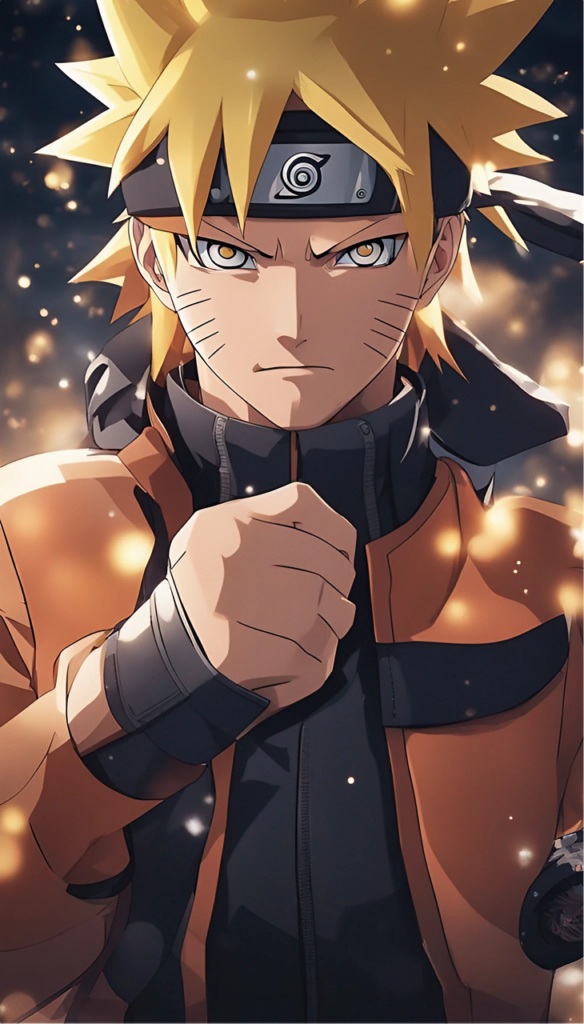The world of Naruto, created by Masashi Kishimoto, has captured the hearts and minds of millions of fans worldwide. This captivating anime and manga series offers a unique and immersive experience in a fictional universe where ninja warriors embark on epic adventures. With its rich lore, diverse characters, and intricate storytelling, Naruto has become a cultural phenomenon, leaving a lasting impact on its fans. This essay explores the remarkable world of Naruto, highlighting its key elements and the reasons behind its enduring popularity.
Central to the Naruto universe is the concept of the “Shinobi Way.” The Shinobi, or ninja, adhere to a set of principles that encompass loyalty, friendship, and self-improvement. Naruto Uzumaki, the series’ protagonist, embodies these values as he strives to become the Hokage, the leader of his village. The journey of Naruto and his friends showcases the importance of perseverance, teamwork, and never giving up, resonating with audiences of all ages. The Shinobi Way not only serves as a moral compass for the characters but also imparts valuable life lessons to the viewers.
The Naruto world is divided into five major hidden villages, each with its distinct culture, traditions, and shinobi clans. From the leafy village of Konohagakure, home to Naruto and his friends, to the sandy Sunagakure and the misty Kirigakure, these villages serve as vibrant backdrops for the story’s unfolding. Each hidden village boasts an array of memorable characters, ranging from powerful warriors to cunning strategists. These characters, with their diverse personalities and motivations, contribute to the depth and complexity of the narrative.
Ninjutsu, the art of ninja techniques, plays a pivotal role in the Naruto world. Characters wield a wide range of elemental and non-elemental jutsu, such as fire, water, lightning, and even illusions. The intense battles that ensue are not only visually spectacular but also showcase the tactical brilliance of the combatants. The series’ iconic fights, like Naruto’s clashes with Sasuke Uchiha and the epic confrontation between Naruto and Pain, are renowned for their emotional impact, breathtaking animation, and the profound character growth that often accompanies them.
Naruto delves deep into themes of friendship, redemption, and the power of understanding. The bonds forged among the characters, such as Naruto’s unwavering friendship with Sasuke and his mentorship under Kakashi, highlight the significance of loyalty and emotional support. Moreover, the series explores the potential for redemption even in the face of past mistakes. Characters like Gaara and Itachi Uchiha undergo transformative arcs, demonstrating that change and personal growth are always possible, no matter how dark one’s past may be.
The world of Naruto is a captivating realm that captivates fans with its unique blend of action, emotion, and profound storytelling. Its enduring popularity can be attributed to its relatable characters, powerful themes, and the universal lessons it imparts. Naruto has left an indelible mark on popular culture and continues to inspire and entertain audiences worldwide.
One of the most remarkable aspects of Naruto’s world is its complex political and social structure. The world is divided into five great nations: the Land of Fire, the Land of Water, the Land of Wind, the Land of Earth, and the Land of Lightning. Each of these nations is governed by a hidden village, such as Konoha (Hidden Leaf Village) in the Land of Fire, which serves as the primary setting of the series. Each village is led by a Kage, the most powerful ninja in the region, who is responsible for protecting the village and guiding its development.
Chakra, a mystical energy source, serves as the foundation of power in the Naruto universe. It is the driving force behind the various techniques, known as jutsu, that ninjas use in battle. These techniques are categorized into three main types: ninjutsu (ninja techniques), taijutsu (hand-to-hand combat), and genjutsu (illusionary techniques). Different ninja clans have their own unique abilities and bloodline limits, such as the Uchiha Clan’s Sharingan or the Hyuga Clan’s Byakugan, which grant them extraordinary combat capabilities.
The world of Naruto is also heavily influenced by traditional Japanese culture and mythology. Elements such as samurai, feudal society structures, and folklore-inspired creatures are woven throughout the series. For instance, the Tailed Beasts (Bijuu), powerful chakra monsters, are inspired by Japanese mythology and represent various natural disasters and spiritual beings. Naruto himself is the host of the Nine-Tails Fox, Kurama, a creature based on the mythological kitsune, which embodies both destruction and wisdom.
Themes of friendship, perseverance, and the cycle of hatred are central to the Naruto narrative. The story emphasizes the importance of bonds and the struggles of overcoming loneliness and discrimination. Naruto, having been ostracized due to his status as a Jinchuriki (a host of a Tailed Beast), grows through his relationships with friends and mentors, such as Sasuke Uchiha and Kakashi Hatake. The series delves into the consequences of war, revenge, and the pursuit of peace, making it more than just an action-oriented story but also a deep exploration of human nature.
Over the course of the series, the world of Naruto evolves, introducing new technologies, international relations, and conflicts that challenge the traditional ways of the ninja world. The eventual creation of the Shinobi Alliance demonstrates the potential for unity among historically warring factions, highlighting the overarching message of cooperation and understanding.
Ultimately, the world of Naruto stands out due to its intricate world-building, compelling characters, and meaningful themes. It captures the essence of struggle and growth, resonating with audiences around the world and leaving a lasting impact on the anime and manga community.



